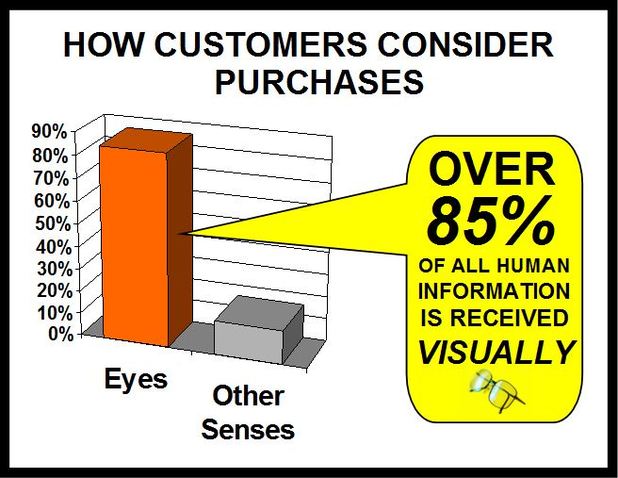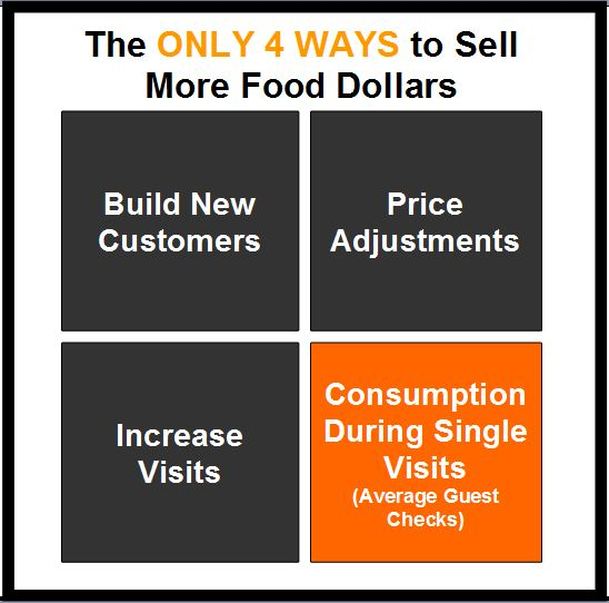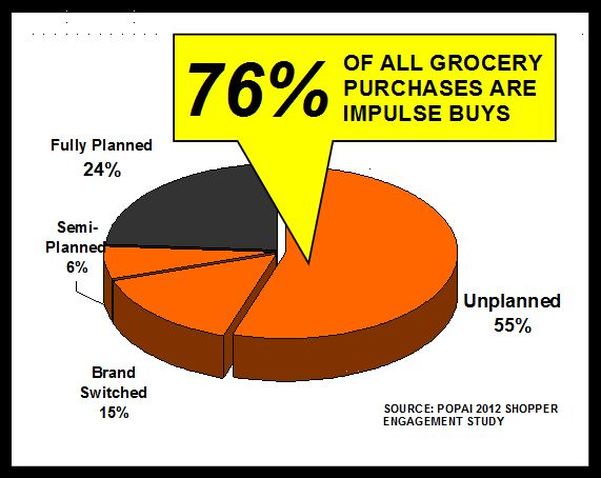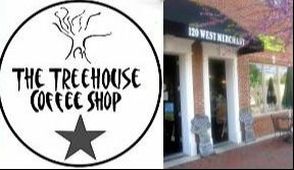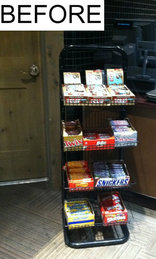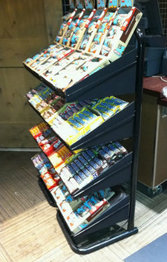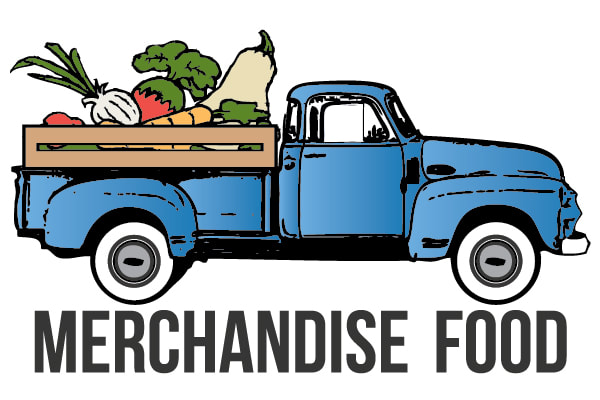Grab & Go markets are operated in many different manners all of which should influence store layout and design to foster great shopping experiences and efficient operations. We hope the suggestions and prompts below will streamline and simply your planning process.
Select a Business / Staffing Model: First, consider if you will create a staffed or self-service marketplace. Labor requirements offer guest service and assistance yet impact profitability. Could staff assist during peak times to guide and speed transactions? Would busy guests prefer using intuitive software for self-checkout and payment? Consider your shopper demographic's expectations for the desired level of service.
Let your Staffing Model Frame Equipment Needs: Unstaffed markets generally feature entirely self-service equipment and pre-packaged products. Alternatively staffed markets leverage refrigerated or ambient service display cases where attendants select, containerize, and present foods to order.
Allocate Space by Defining Grab & Go and /or Made_to-Order Food: Modern market & restaurant concepts often feature a mix of pre-packaged and made to order foods. Will you? If so, significant space will be required for cooking or food assembly areas, restrooms & seating.
Let your Vision Guide an Intentional Store Design: As you can now probably imagine, your retail strategy and offerings will significantly impact layout, use of space, design and your operational model. As a result, It is important to schedule cross-functional conversations with construction, ownership, design and operations teams to make essential decisions early on.
Avoid Design vs. Operations Pitfalls: Unfortunately, many markets are planned in silos or pre-planned years in advance before capital funding is secured. The result can be a space planned with minimal flexibility or designed to be operated in one fashion, but later actually operated in another driving inefficiency, and employee and customer frustration. In our retail consulting work, we've regularly seen totally pre-packaged grab & go foods awkwardly stacked behind glass in refrigerated display cases. All the benefits of grab & go food without the ability to self-shop. These scenarios create significant missed sales opportunities. Ensure plans are aligned to the operational model and updated for current retailing and shopping behaviors before construction begins! Otherwise you'll commit to locking in under-performance for years to come.
Select a Business / Staffing Model: First, consider if you will create a staffed or self-service marketplace. Labor requirements offer guest service and assistance yet impact profitability. Could staff assist during peak times to guide and speed transactions? Would busy guests prefer using intuitive software for self-checkout and payment? Consider your shopper demographic's expectations for the desired level of service.
Let your Staffing Model Frame Equipment Needs: Unstaffed markets generally feature entirely self-service equipment and pre-packaged products. Alternatively staffed markets leverage refrigerated or ambient service display cases where attendants select, containerize, and present foods to order.
Allocate Space by Defining Grab & Go and /or Made_to-Order Food: Modern market & restaurant concepts often feature a mix of pre-packaged and made to order foods. Will you? If so, significant space will be required for cooking or food assembly areas, restrooms & seating.
Let your Vision Guide an Intentional Store Design: As you can now probably imagine, your retail strategy and offerings will significantly impact layout, use of space, design and your operational model. As a result, It is important to schedule cross-functional conversations with construction, ownership, design and operations teams to make essential decisions early on.
Avoid Design vs. Operations Pitfalls: Unfortunately, many markets are planned in silos or pre-planned years in advance before capital funding is secured. The result can be a space planned with minimal flexibility or designed to be operated in one fashion, but later actually operated in another driving inefficiency, and employee and customer frustration. In our retail consulting work, we've regularly seen totally pre-packaged grab & go foods awkwardly stacked behind glass in refrigerated display cases. All the benefits of grab & go food without the ability to self-shop. These scenarios create significant missed sales opportunities. Ensure plans are aligned to the operational model and updated for current retailing and shopping behaviors before construction begins! Otherwise you'll commit to locking in under-performance for years to come.
DISCOVER MISSED OPPORTUNITIES
TO SELL MORE FOOD.
Our No-Obligation Phone Consultation can help you begin this quest reviewing your operation for impulse sales, employee skill deficiencies, display improvement, & missed cross-merchandising.
CHALLENGES, LIMITING FOOD SALES OPPORTUNITIES, ARE EVERYWHERE
Food merchandising challenges create hidden losses
and missed sales opportunities that must be discovered and solved to maximize profitability. Every business needs needs strategic growth and
profitability plans for retail, grab & go, and prepared entrées while
improving guest satisfaction. We help you optimize inventories, minimize product outages, improve display
technique, train employees, and meet high-volume demands. Profit improvement must minimize shrink or
product loss and decrease unnecessary food inventories.
How Can I Learn to Display Food For Sale Successfully? Visit:
|
I am a huge skeptic of consultants trying to sell me on their expertise. That being said, after a couple hours of consulting with Jonathan, I had some home work to do. But unlike the homework that seems tedious and pointless, when we implemented his suggestions we started to see drastic changes in our sales. Tina Van Osten, Co-Owner of The Tree House Coffee Shop
WHAT TYPES OF FOOD MERCHANDISING CHALLENGES PREVENT SALES?
MANY LITTLE INEFFECTIVE STRATEGIES
ADD UP QUICKLY LIMITING PROFITS.
FOOD MERCHANDISING WEAKNESSES HAPPEN IN THE WORLD'S BEST COMPANIES. IT HAPPENS TO EVERYONE, THERE'S NO PERFECT MERCHANT. SOMEWHERE IN MOST ORGANIZATIONS SOME OR ALL OF THE FOLLOWING ARE LIMITING THE BOTTOM LINE:
|
INVENTORIES TYING UP CASH FLOW
FOOD DISPLAYS MISSING FULL POTENTIALUNTRAINED OR POOR HIRES POOR MERCHANDISING TECHNIQUES FIXTURE ADJUSTMENTS |
POOR PURCHASING AFFECTING FOOD QUALITY
RECEIVING & STORAGE CONCERNS LACKING MERCHANDISING PROCEDURES IMPROPER PRODUCT ORDERING/PRODUCTION UNENGAGED EMPLOYEES |
WE LOCATE CHALLENGES AND SOLVE THEM WITH
OR FOR OUR CLIENTS
OR FOR OUR CLIENTS
WHO CAN BENEFIT FROM IMPROVED VISUAL FOOD PRESENTATION & DISPLAY?
RESTAURANTS & FOOD SERVICE OPERATORSResort * Campus Dining * Amusement Park * Golf Course * Cruise Line * Casino * Museum * Food Court * Food Service Management
|
FOOD MARKETS & FRESH RETAILERSMarket Style Concepts * Farm-to-Table Restaurants * Farmers Market Vendors * Gourmet Retailers
|
